The Audemars Piguet Royal Oak Double Balance Wheel Openworked 41mm, Now in Black Ceramic (Live Pics)
The striking combination of the Double Balance and the RO Full Ceramic.

Looking at the vast range of Royal Oak watches available, which goes from classic Selfwinding models to Grande Complications, the question of which are the most sought-after models arises. Besides the Extra-Thin Jumbo watches, the full ceramic Royal Oak and the Double Balance Wheel Openworked are clearly very high in terms of desirability. So what if you were to combine both concepts? You’d end up with a stunning Audemars Piguet, the new Royal Oak Double Balance Wheel Openworked 41mm Black Ceramic, that we present to you today.
This is the first time that the Royal Oak Double Balance Wheel Openworked is offered with a ceramic case and bracelet. Prior to this watch, full ceramic (case and bracelet) attire has been reserved for the Tourbillon Extra-Thin, the Perpetual Calendar – in black ceramic, in white ceramic and in black ceramic with openworked movement – and finally for the Tourbillon Chronograph Openworked. And while ceramic is a material often seen on the Royal Oak Offshore watches, its use remains less common for the classic Royal Oak watches, especially since the case and the bracelet are made in this material – by no means a simple task.
On the other hand, we have the Double Balance Wheel Openworked concept, a quite fascinating mechanical innovation introduced to the Royal Oak collection in 2016. A replacement for the Royal Oak Openworked Selfwinding with its evolution of the calibre 3120 in a fully skeletonized version, the new Double Balance concept is a watch for amateurs of Haute Horlogerie, whether for the execution of its movement and the decoration, or for its focus on chronometry. The combination of this impressive movement and the complex full ceramic case and bracelet makes for one of the most striking Royal Oak models in the current collection.
Classic Royal Oak style, in full ceramic
The watch itself retains most elements of previous Royal Oak Double Balance Wheel Openworked models. What we’re looking at today is mostly an evolution of materials and colours. As such, the case still measures 41mm in diameter and features the emblematic octagonal bezel with eight gold screws on top. It has a relatively thin profile of 9.7mm, a hexagonal screw-lock crown and alternation of brushed surfaces and polished accents – features that are kept, despite the new material. The main update concerns the use of black ceramic, a lightweight and ultra-resistant material, for both the case, the bezel, the crown and the bracelet. The caseback is made of titanium.
As we’ve explained on several occasions, the use of ceramic for the Royal Oak is not a simple task. In order to retain the exact same shape and finishing as a stainless steel or solid gold model, the ceramic Royal Oak watches require an impressive amount of time to machine and hand-finish the parts – the bracelet alone requires 30 hours of finishing, which is five times longer than for the steel version. But clearly, the result is stunning. As you can see in the photos, the black ceramic material is also rather playful depending on the light conditions, reflecting or absorbing ambient light.
Some evolutions are also noticeable on the dial side. While the movement, its decoration and the visible double balance wheel module are retained, the inner flange with a minute track is now treated in black to match the case. The hands and the applied indexes are still executed in 18k pink gold and feature some luminescent material. The complexity of this Royal Oak Double Balance Wheel Openworked doesn’t hide in the display of this classic 3-hand watch. The star of the show is, without a doubt, the complex regulating organ, highlighted between 6 and 9 o’clock, with its gold bridge and balances, contrasting with the dark grey movement – which, as you can see, is superbly decorated by hand, with sharp inward angles and hand-polished chamfers (among other decorations).
The Double Balance Wheel Concept
The principle of the Double Balance Wheel, as we explained in this in-depth video with the CEO of Audemars Piguet, François-Henry Bennahmias, is all about chronometric performance. Placing this double balance wheel device on a classic calibre 3120 allows its benefits to be measured, in comparison to a traditional single balance movement. The idea was to exploit the advantages of having two balance springs, without the issues that come with them. Having a double spring increases precision. However, this construction (when you have two hairsprings on the same side of a single balance) is known to be difficult to adjust and does create extra friction on the balance staff. Taking two springs made of the same alloy and setting them 180° apart cancels this completely, which benefits the overall chronometric performance of the watch.
In addition, Audemars Piguet’s solution of not having a dual-hairspring but a double balance, meaning a construction with a balance staff carrying one balance and one hairspring on each side, allows the watch to be regulated from each side of the movement. Because there are two variable inertia balances placed opposite one another, the weight is perfectly distributed around the balance staff and watchmakers can finely tune the watch in all positions. Also, because the weight is equal on both sides of the balance staff, it means that friction is reduced and also better distributed.
The rest of the movement, taking aside the skeletonization process and the double balance construction, is close to a classic Calibre 3120, which has been the brand’s core automatic movement for several years. The Calibre 3132 you see here runs at a frequency of 3Hz with a power reserve of 45 hours – shorter than the 3120, as the double balance consumes more energy. The caseback reveals superb decorations, with traditional Haute Horlogerie techniques, and an openworked 22k gold rotor.
Thoughts
The Audemars Piguet Royal Oak Double Balance Wheel Openworked 41mm Ceramic is yet another demonstration of the brand’s savoir-faire. A combination of tradition and innovation, in true AP style. While the design and the materials are technical, bold and ultra-modern, the movement is, horologically speaking, an ode to traditional craftsmanship and chronometry. This contrast creates a stunning, striking watch that is executed with impressive expertise. And the use of ceramic is, once again, perfectly apt for the Royal Oak concept resulting in a watch with a great level of desirability.
Availability & price
This new ceramic take on the Royal Oak Double Balance Wheel Openworked (reference 15416CE.OO.1225CE.01) will be available exclusively from boutiques from December 2020. It will be priced at CHF 72,100 (excl. taxes).
More details at www.audemarspiguet.com.

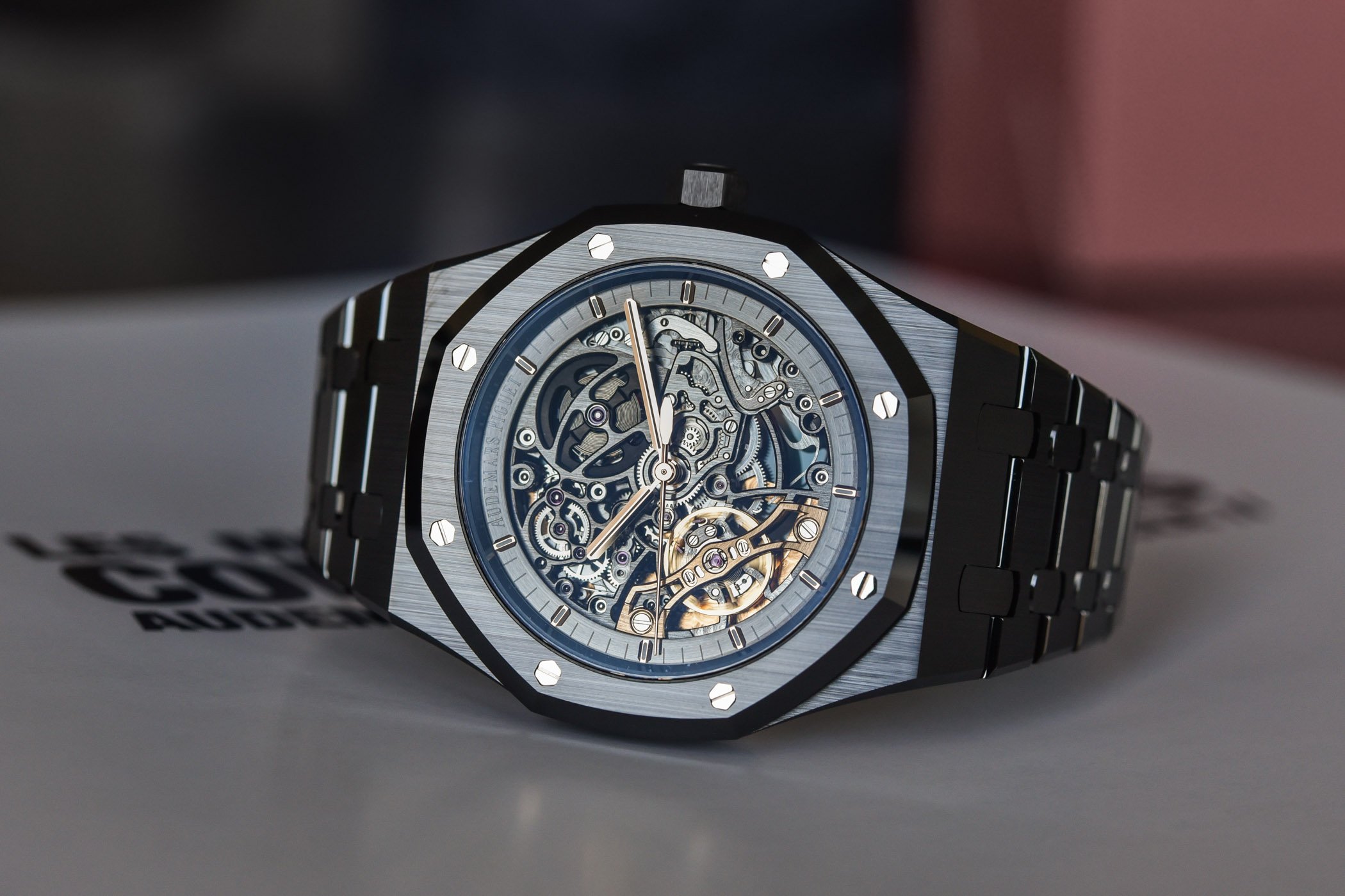
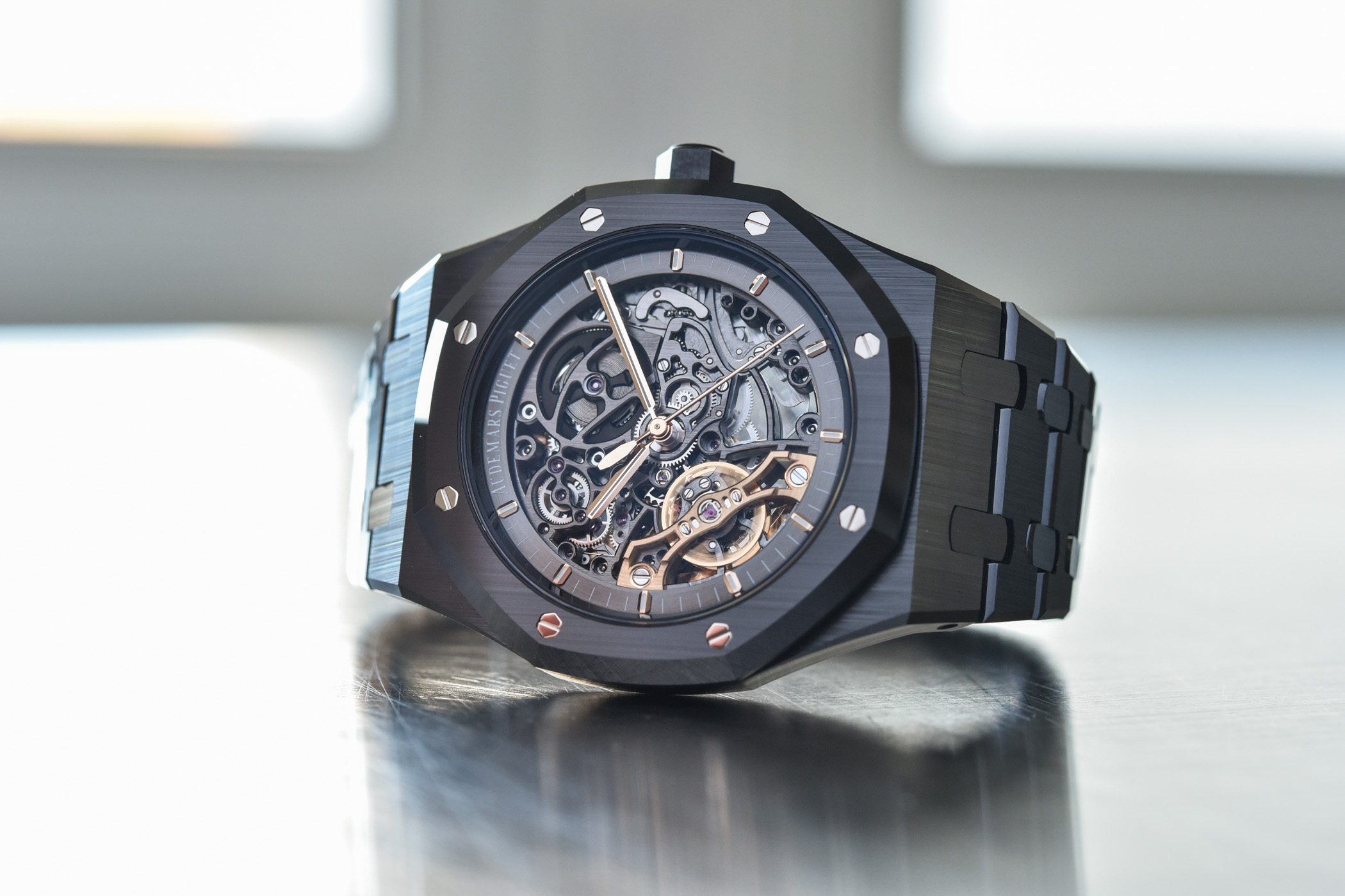

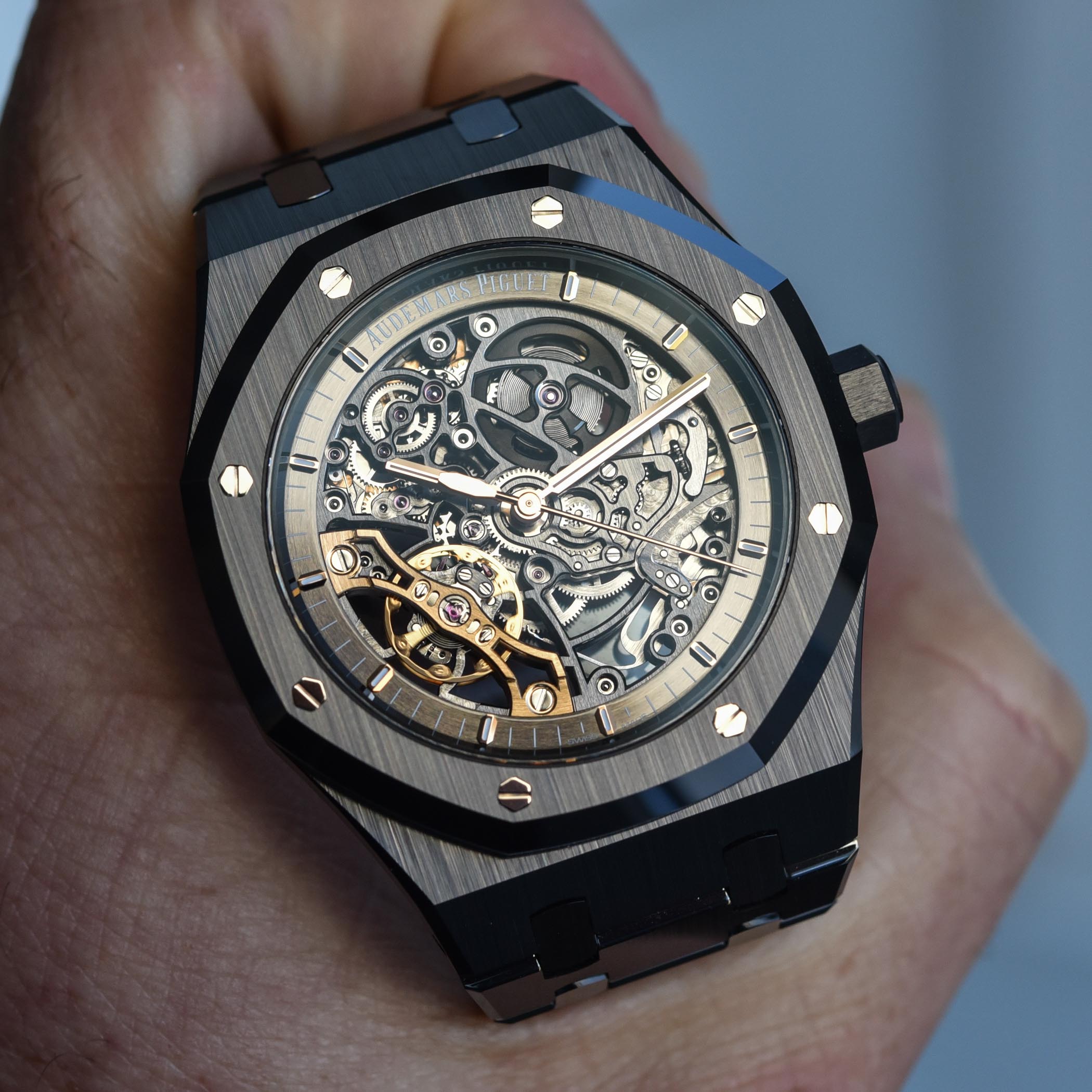
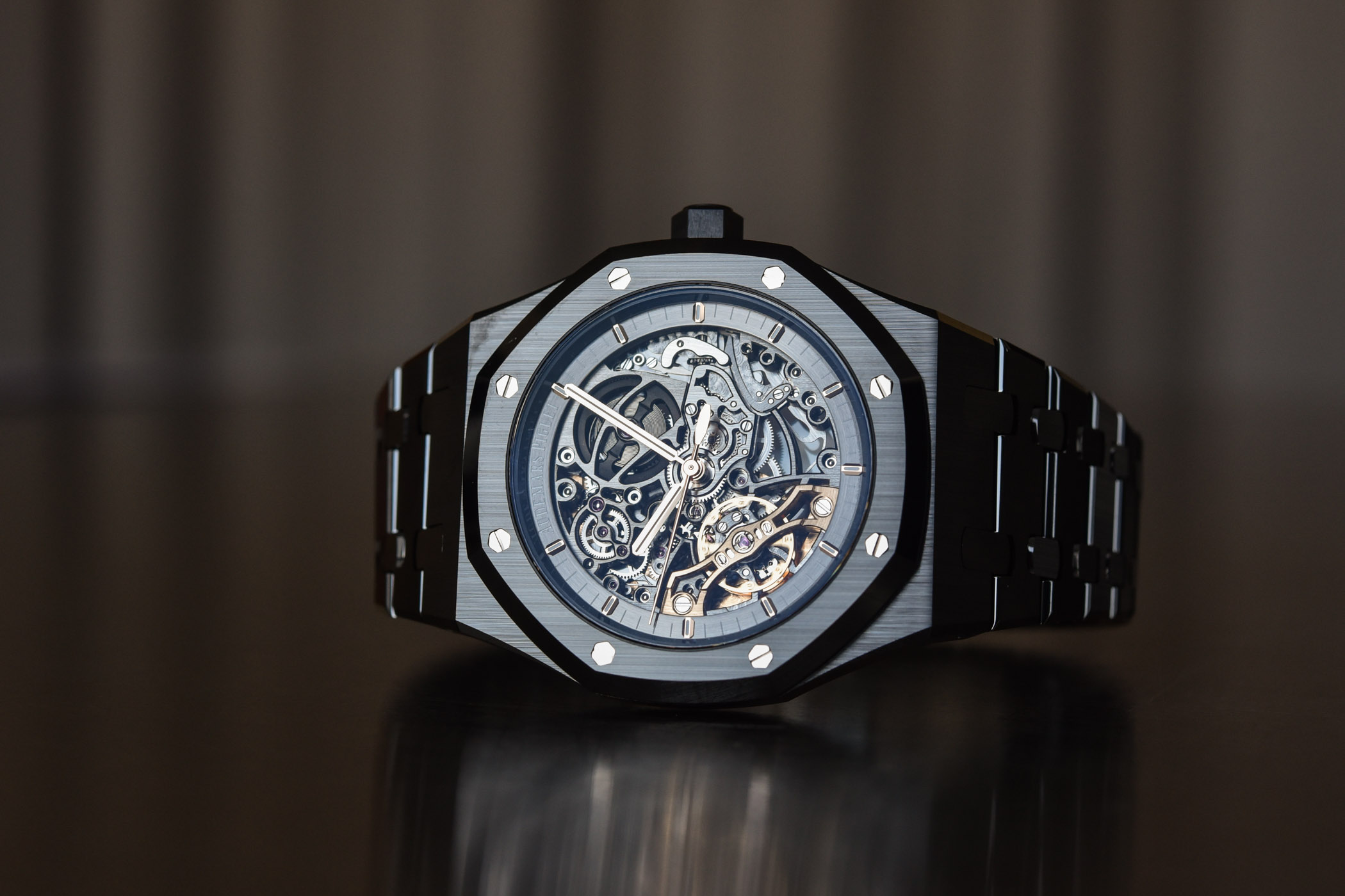
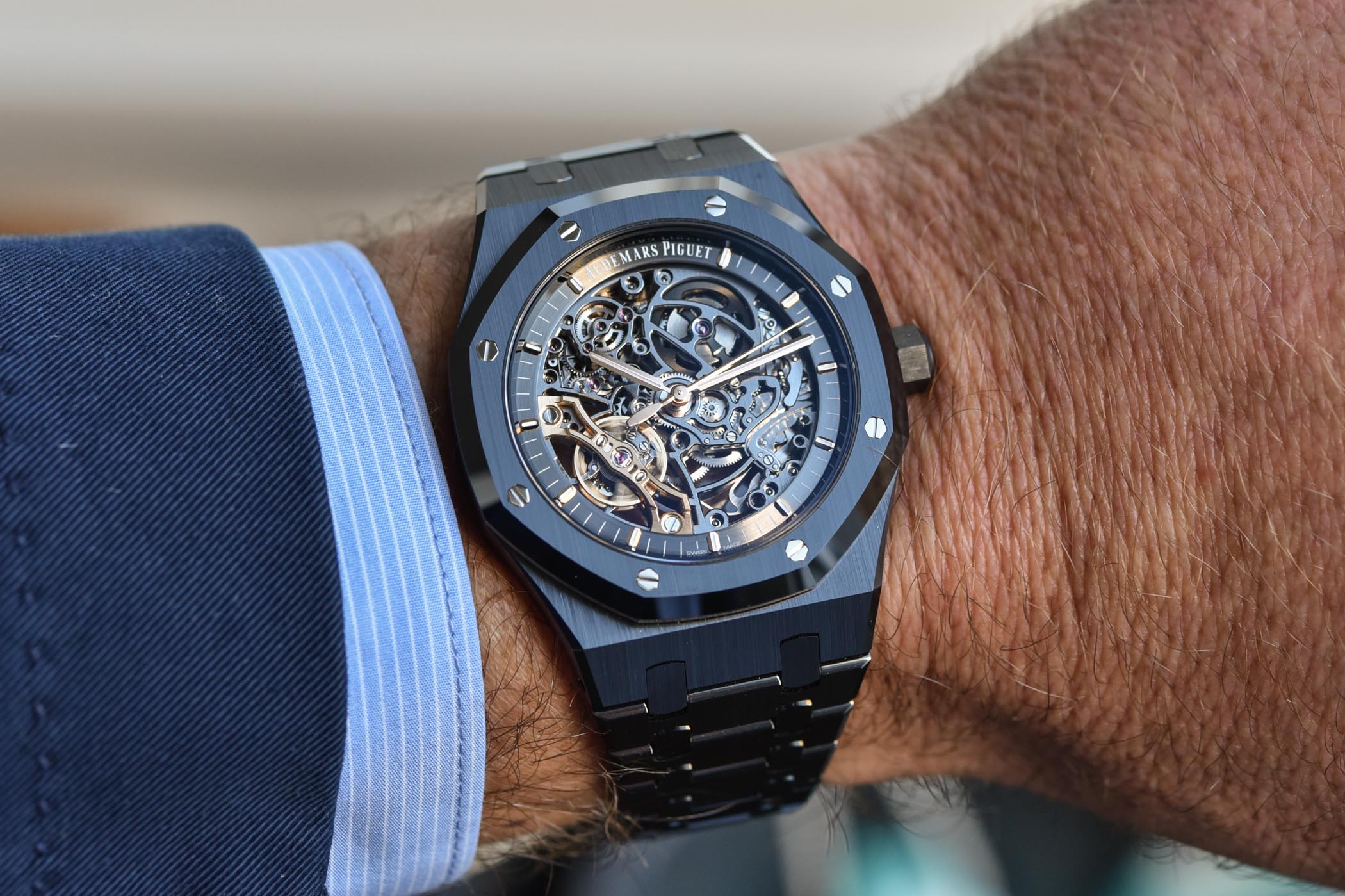

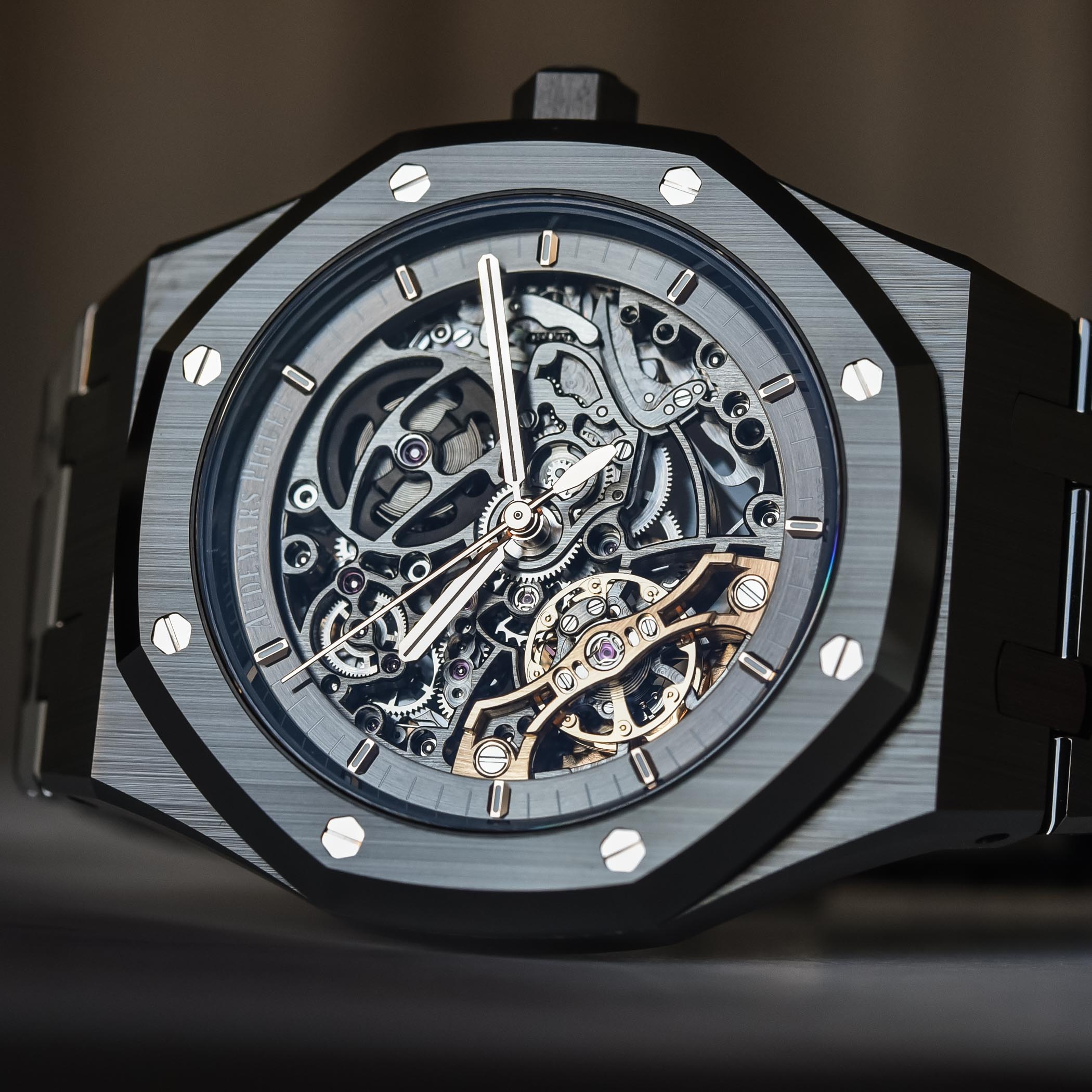
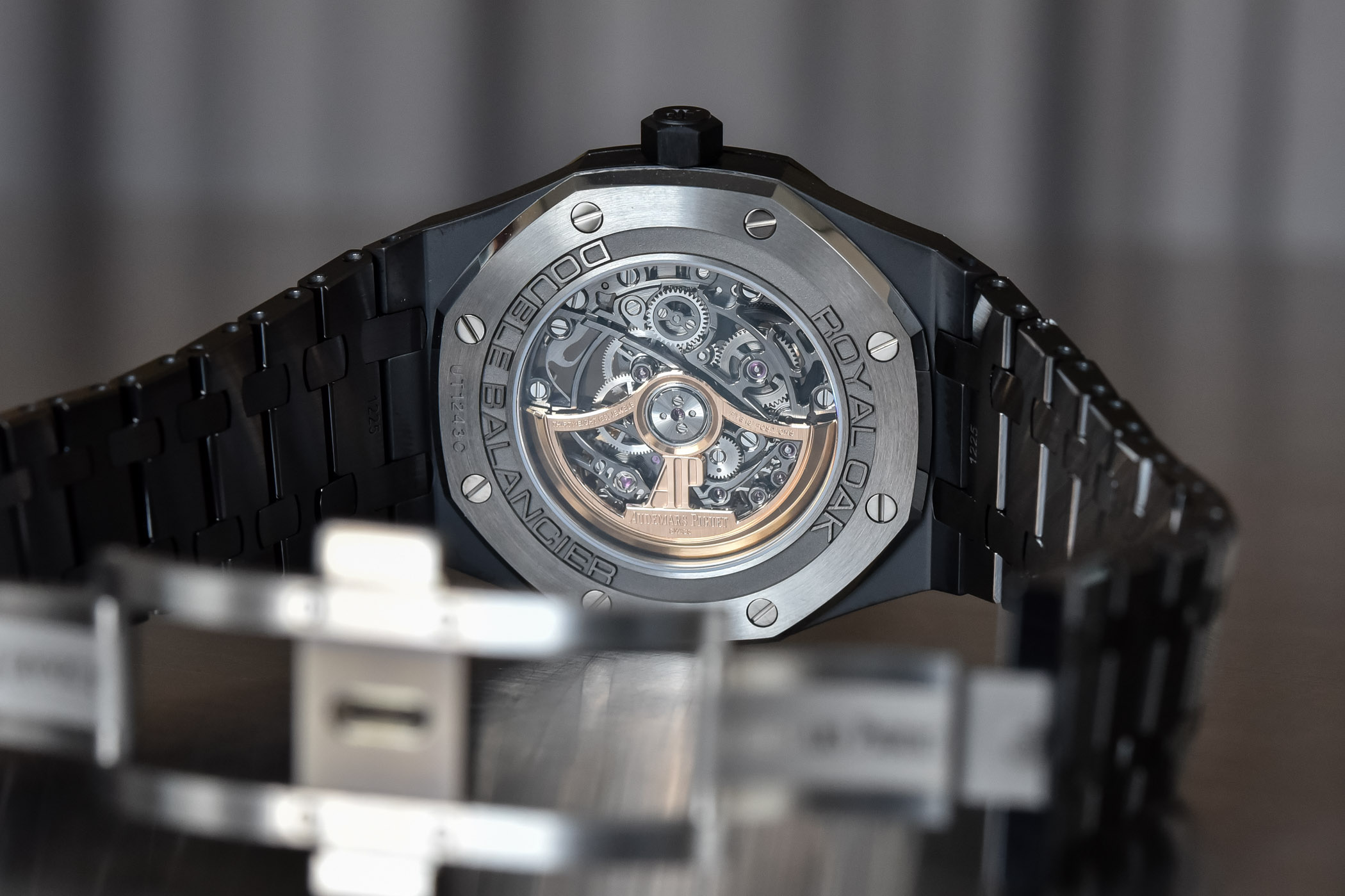




3 responses
Damn, that is sexy. There’s a tiny bit of a Kerbedanz Black vibe to it, but nicer.
So damn gorgeous indeed! I’m sure the waiting list will be insane, same as the steel version or worse.
I had two ceramic watches. Ceramic can be scratched and if this happens it cannot be repaired. They are beautiful but delicate watches